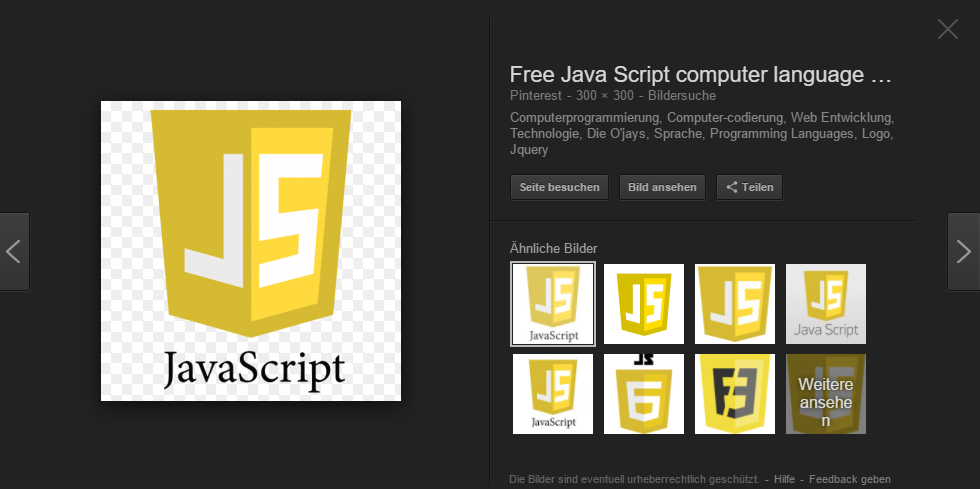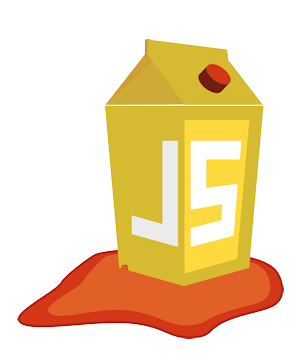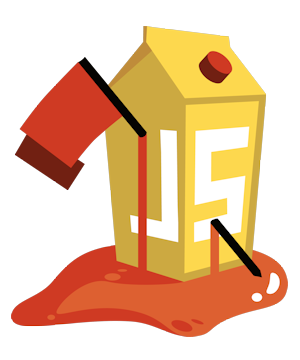Why the Juice Shop exists
To the unsuspecting user the Juice Shop just looks like a small online shop which sells - surprise! - fruit & vegetable juice and associated products. Except for the entirely overrated payment and delivery aspect of the e-commerce business, the Juice Shop is fully functional. But this is just the tip of the iceberg. The Juice Shop contains 80 challenges of varying difficulty where you are supposed to exploit underlying security vulnerabilities. These vulnerabilities were intentionally planted in the application for exactly that purpose, but in a way that actually happens in "real-life" web development as well!
Your hacking progress is tracked by the application using immediate push notifications for successful exploits as well as a score board for progress overview. Finding this score board is actually one of the (easiest) challenges! The idea behind this is to utilize gamification techniques to motivate you to get as many challenges solved as possible - similar to unlocking achievements in many modern video games.
Development of the Juice Shop started in September 2014 as the authors personal initiative, when a more modern exercise environment for an in-house web application security training for his employer was needed. The previously used exercise environment was still from the server-side rendered ASP/JSP/Servlet era and did not reflect the reality of current web technology any more. The Juice Shop was developed as open-source software without any corporate branding right from the beginning. Until end of 2014 most of the current e-commerce functionality was up and running - along with an initial number of planted vulnerabilities. Over the years more variants of vulnerabilities were added. In parallel the application was kept up-to-date with latest web technology (e.g. WebSockets and OAuth 2.0) and frontend frameworks (i.e. by migrating from AngularJS with Bootstrap to Angular with Material Design). Some of these additional capabilities then brought the chance to add corresponding vulnerabilities - and so the list of challenges kept growing ever since.
Apart from the hacker and awareness training use case, penetration testing tools and automated security scanners are invited to use Juice Shop as a sort of guinea pig-application to check how well their products cope with JavaScript-heavy application frontends and REST APIs.
Why OWASP Juice Shop?
Every vibrant technology marketplace needs an unbiased source of information on best practices as well as an active body advocating open standards. In the Application Security space, one of those groups is the Open Web Application Security Project (or OWASP for short).
The Open Web Application Security Project (OWASP) is a 501(c)(3) worldwide not-for-profit charitable organization focused on improving the security of software. Our mission is to make software security visible, so that individuals and organizations are able to make informed decisions. OWASP is in a unique position to provide impartial, practical information about AppSec to individuals, corporations, universities, government agencies and other organizations worldwide. Operating as a community of like-minded professionals, OWASP issues software tools and knowledge-based documentation on application security.1
Two years after its inception the Juice Shop was submitted and accepted as an OWASP Tool Project by the Open Web Application Security Project in September 2016. This move increased the overall visibility and outreach of the project significantly, as it exposed it to a large community of application security practitioners.
Once in the OWASP project portfolio it took only eight months until Juice Shop was promoted from the initial Incubator maturity level to Lab Projects level. End of July 2018 the Juice Shop was promoted into the final Flagship maturity stage for OWASP projects.

Why the name "Juice Shop"?
In German there is a dedicated word for dump, i.e. a store that sells lousy wares and does not exactly have customer satisfaction as a priority: Saftladen. Reverse-translating this separately as Saft and Laden yields juice and shop in English. That is where the project name comes from. The fact that the initials JS match with those commonly used for JavaScript was purely coincidental and not related to the choice of implementation technology.
Why the logo?
Other than the name, the Juice Shop logo was designed explicitly with JavaScript in mind:

The authors idea was to convert one of the (unofficial but popular) JavaScript shield-logos into a leaking juice box because it had a quite matching shape for this shenanigans:

In 2017 the logo received a facelift and a spin-off when the Juice Shop introduced its Capture-the-flag extension (which is discussed in its own chapter Hosting a CTF event):


Why yet another vulnerable web application?
A considerable number of vulnerable web applications already existed before the Juice Shop was created. The OWASP Vulnerable Web Applications Directory (VWAD) maintains a list of these applications. When Juice Shop came to life there were only server-side rendered applications in the VWAD. But Rich Internet Application (RIA) or Single Page Application (SPA) style applications were already a commodity at that time. Juice Shop was meant to fill that gap.
Many of the existing vulnerable web applications were very rudimental in their functional scope. So the aim of the Juice Shop also was to give the impression of a functionally complete e-commerce application that could actually exist like this in the wild.
1. https://www.owasp.org ↩